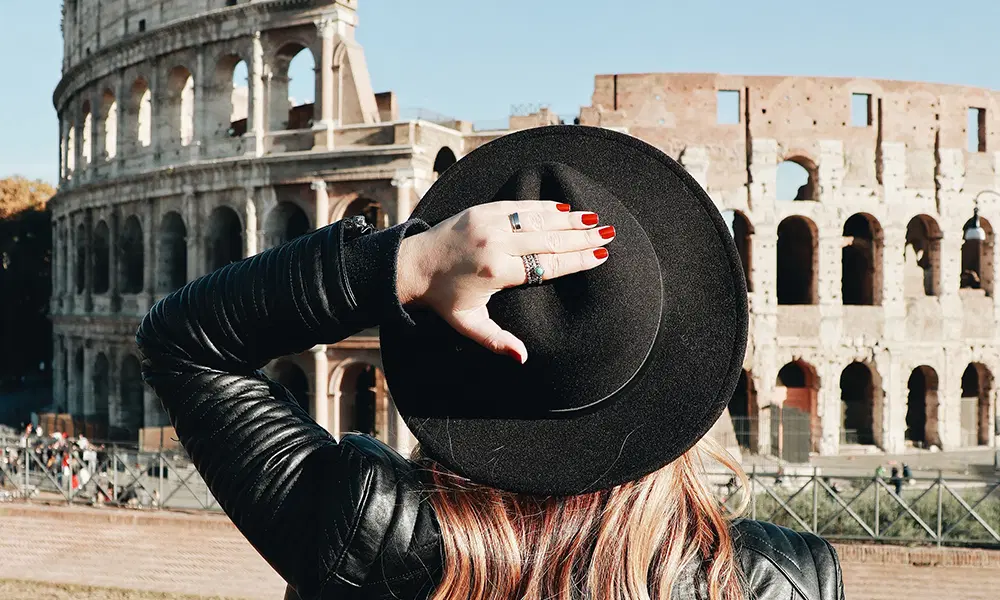In Italy, there are thousands of fashion choices to consider that represent various personalities and trends.
The primary distinction between Italian style and the styles reflected in other countries is that it generally has a more fitted, tailored appearance. The real key to the Italian everyday fashion witnessed by tourists is a tailored look.
When travelling, many people prefer to shed their tourist attire in order to blend in with the locals. It’s natural to wonder what Italians wear, but it’s also crucial to remember that the most comfortable clothing to bring is what makes you feel most at ease.
Whether looking through the latest women’s designer sale or treating yourself to capsule items, this guide will uncover what to pack and wear when in Italy.
Your Wardrobe Will Depend On Location
Italy’s clothing fashions vary from north to south. Milan and the northern parts of this lovely nation have a very fashionable and sometimes over-the-top style. On the other hand, the weather in Venice may influence fashion trends.
As with other areas, there are certain considerations. Leave the beachwear on the beach since it doesn’t translate well to streetwear in the city. Dressing in your gym clothes unless you’re going to the gym is also a bad idea; this will only cause you problems.
Spring & Summer
Layers are required in the months of spring when the weather fluctuates. Choose ten to fifteen pieces of clothing that may be mixed and matched. Remember to include at least two outer layers that can be worn together to keep you warm in colder weather, too.
Clothing should be adaptable and comfortable to wear while on your trip. Choose clothes that are suited for the weather, keeping in mind the possibility of extreme temperatures.
During this fickle season, look for vibrant and light hues; it’s very hot when the sun is shining. Jeans are a must-have – dark denim is your best bet – it’s always in vogue.
Tops and bottoms should be chosen to match, and don’t forget a light jacket for layering on chilly days and evenings, as well as a waterproof outerwear item like a light trench coat for unexpected rain.
Autumn & Winter
If travelling in winter, pack thick gloves, a warm scarf, and a woolly hat. If you’re going to the north, consider packing a soft winter coat and some merino wool thermals.
In the south, you may either wear a coat or a quilted jacket. Dress in layers so that you can add or remove clothing as temperatures fluctuate throughout the day.
Top Tip: In the event of unexpected rain, an umbrella is more practical and fashionable than a waterproof rain jacket.
What Materials Should You Focus On In Winter?
To prepare for the winter season, you don’t need to wear five sweaters. In reality, you only need three layers constructed of certain materials. The better these materials are, the warmer and drier you’ll be. Here are three materials that are favoured when layering in winter:
Wool
Make sure you have enough wool sweaters in the winter—this is the most heat-retaining material available. It has natural insulating and moisture-wicking features that keep you toasty in chilly weather.
If you’re sensitive to wool fabric, try merino instead. It’s considerably softer and more pleasant than standard wool.
Fleece
Fleece, like wool and silk, is composed of a synthetic fabric known as polyester. It’s designed to resemble wool and succeeds in doing so well—fleece keeps you warm without weighing you down. It dries fast, so you may wear it in the rain or when exercising outdoors in the cold.
Down
Goose down is an excellent insulator. It’s a little pricey since it comes from geese and ducks’ feathers, though. Down is usually tucked inside a waterproof outer layer when it’s used in jackets. The more down feathers a coat has, the warmer you’ll feel!
Shoe Options
While beautiful to look at, cobblestones aren’t always the most comfortable to walk on and can cause painful feet. The Italian streets might also be hilly, slick when wet, and uneven in certain cities.
If you’re visiting a popular tourist destination, such as Venice or Rome, keep in mind that walking is the name of the game. Choose comfortable shoes if you’re going to be walking a lot. Consider wearing waterproof leather boots in the winter and light-weight canvas shoes in the summer months.
Pack a pair of dressy shoes to wear when dining out in Italy. Wedges or ballet flats are good alternatives if you don’t wish to wear heels on cobbled streets.
To Summarise
In general, European style is more formal than American style, but this does not imply that business attire is required. A classic uniform consisting of a nice blouse and well-fitting denim will work well in Italy (and, thanks to Italy’s influence, any other part of Europe!).
Select clothes that are both comfortable and timeless so you may look back at your pictures with pleasant reminiscences.











